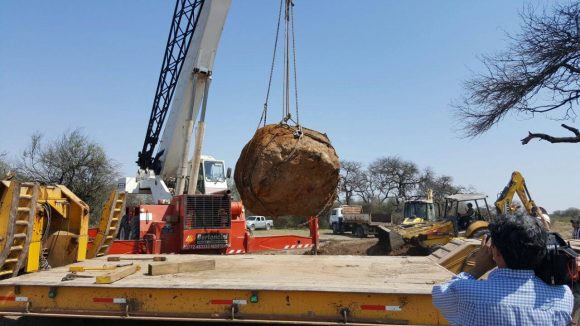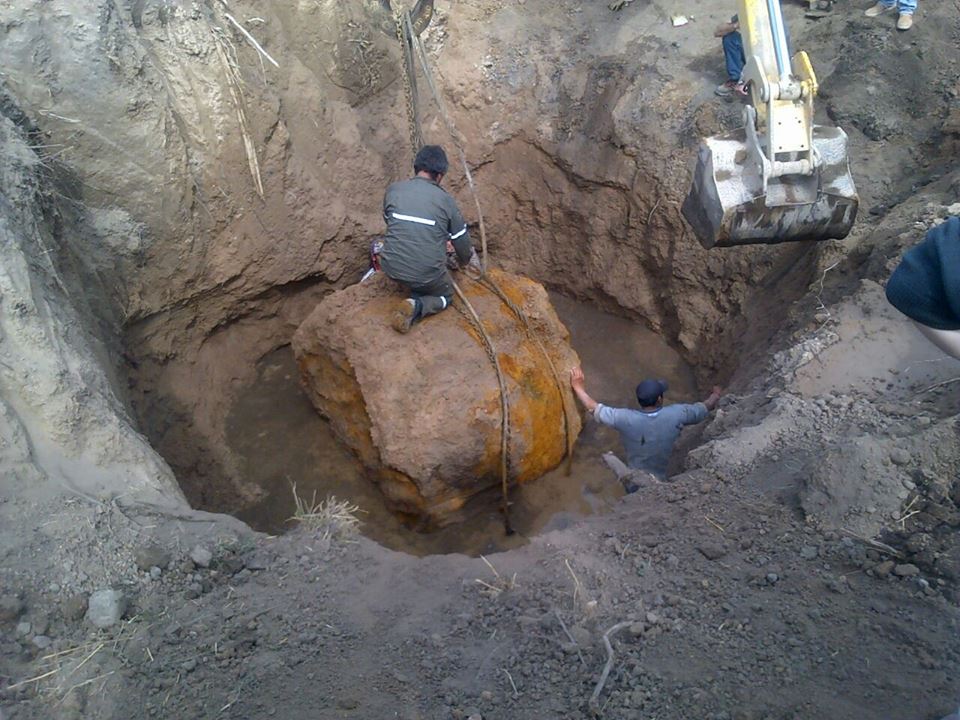Holy iron meteorite, Batman! A gigantic 30-ton chunk of the famous Campo del Cielo meteorite fall has been found outside of a small town in Argentina. The Gancedo meteorite was found on September 10, 2016 by a team of meteorite hunters from the Astronomy Association of the Chaco. This is the second largest piece ever found in the Campo del Cielo region.
Gancedo is the name of the town and Chaco is the province in Argentina where the meteorite was found.

Scientists estimate about 4,500 years ago, a 600 ton space rock entered Earth’s atmosphere and broke apart, sending a shower of metallic meteorites across a 1,350 square km region northwest of Buenos Aires. The region has at least 26 craters.
A spokesman from the Chaco Astronomy Association said they will have the meteorite re-weighed to verify its weight.
The Ministerio de Gobierno Facbook page shared images and a video of the extraction.
While some media outlets have reported this is the second largest meteorite ever found, it actually is only the second largest meteorite from the Campo del Cielo site. The largest meteorite found on Earth is the Hoba meteorite, discovered in Namibia, Africa and is estimated to weigh more than 132,000 pounds (66 tons), and the second largest is the El Chaco, also part of the Campo del Cielo meteorite fall, which weighs an estimated 37,000 kilograms (37 tons).
Meteorites from Campo del Cielo are widely available, but if you are interested in getting a piece, buy only from reputable dealers.
Campo del Cielo meteorites are described as a polycrystalline coarse octahedrite, the most common kind of nickel-iron meteorites.
Sources and further reading: Facebook, ABC News, Scientific American, Meteorite Market.

